Show jumping is a relatively recent equestrian sport compared with other forms of riding. It was first mentioned in a French Cavalry Manual in the late Eighteen Century, about the same time that the Enclosure Acts in Britain gave the hunting men more obstacles to traverse in the shape of hedges and fences. It was some hundred years before show jumping emerged at the Royal Dublin Society in 1865 when there were classes for high and wide leaps on a horse.
History of Show Jumping
Horse show jumping is one of the most ancient equestrian sports. The history of show jumping is discussed as follows:
- The agricultural horse show was natural for new contests.
- The first indoor show in England was recorded in 1876.
- In 1900 AD, the modern Olympics started, and in 1912 Show Jumping was inaugurated as Long Jumping and prize jumping.
- In 1907, International Horse Show was held in England at Olympia.
- In 1920, the post-WW-I Olympic was held in Antwerp, and Italian secured the Gold and Silver Medal in Horse Show Jumping.
- In 1921, Sweden and France started the Federation of Equestre Internationale (FEI) with six other founding members Japan, Belgium, Norway, Italy, Denmark, and the USA.
- In 1923, The British Show Jumping Association (BSJA) was formed with a mixture of Military and Civilian riders.
- In1924, BSJA joined in FEI.
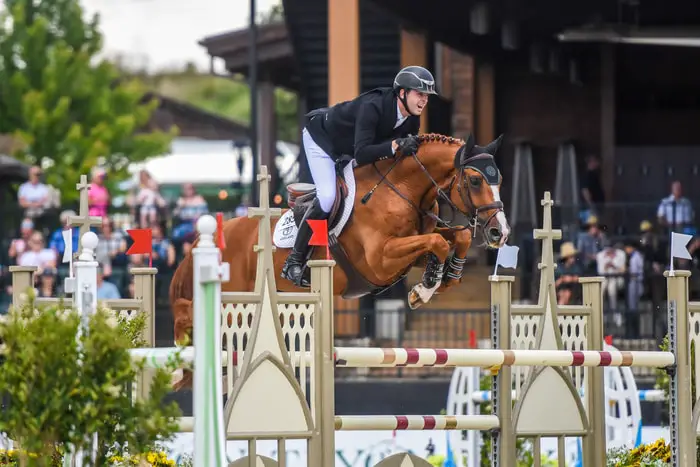
- In 1936, Olympics was held in Germany, and the host country secured the gold medal in show jumping.
- In 1948, post-WW-II was held in England, and horse show jumping was a significant event; the BSJA secured a bronze medal in the games.
- The FEI arranged the first Men’s World Championship in 1953 and held every four years.
- In 1957, the first European Women’s Championship was held, and Britain won there.
- Nowadays, show jumping is one of the most popular events due to TV and other media telecast.
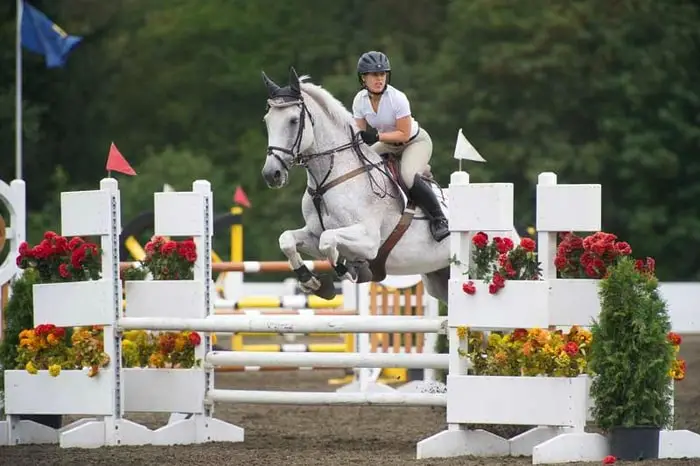
The Show Jumping Horse
The criteria of showjumping horses are as follows:
- The showjumping horse has to be a good athlete with good confirmation.
- The average size of the horse should be 15.3 to 16.3 hands (63 to 67 inches).
- The more miniature horses are suitable for more minor courses but disadvantageous in more extensive courses. The more giant horses are less agile and require a longer to mature, up to 8 years, which is challenging to ride.
- You must avoid lousy mover, horses with larger joints, having essential fats over the feet and legs.
- A thoroughbred horse is the most sustainable breed in show jumping.
- The other show jumper horses are Holstein, Hanoverian, Trakehner, and Selle Francaise.
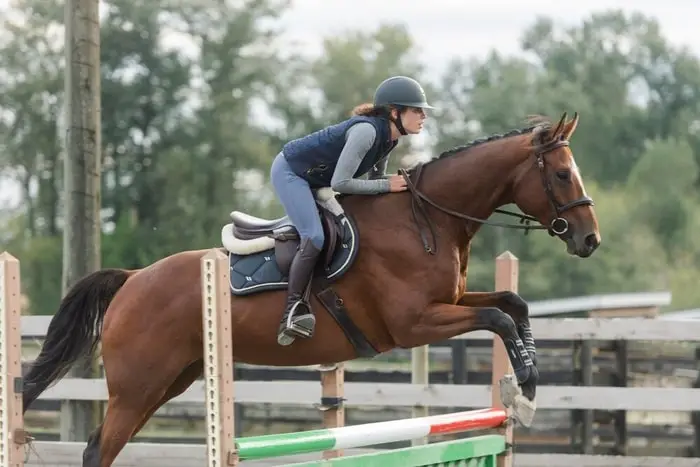
Training of Show Jumping Horse
The show-jumper training starts when it is four or five years old, is well broken in, and has been around a bit. Initially, the training is much the same as for elementary dressage, developing its suppleness, power, balance, and understanding with its rider. In addition, it is walked and trotted over ten or so brightly-painted poles laid on the ground about 120 cm (4 feet) apart. This makes both careful in placing their feet and paying attention.
The poles are replaced 300 cm (10 feet) apart; alternate poles are slightly raised. Then they are slightly raised again, with the horse popping over them on a loose rein. Everything is done gradually so that the horse never feels intimate, and he is given a suitable reward-sugar or his favorite mint- after his exertions.
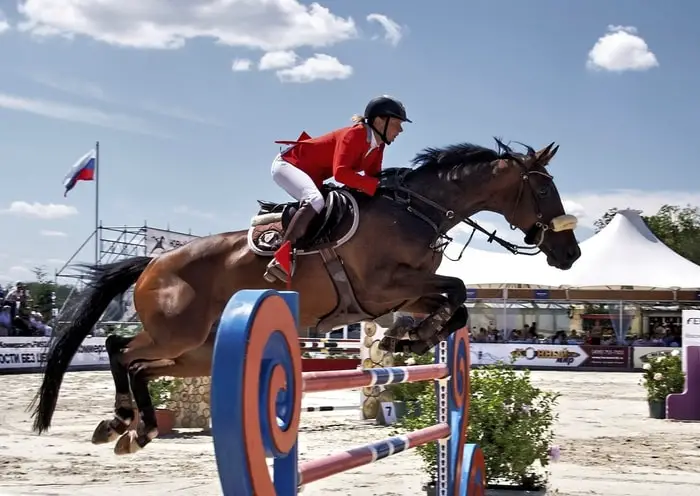
The daily routine is varied, pole trotting interspersed with regular training of trotting and walking in a wide circle, changing direction and pace and gradually narrowing the circle. The use of central poles gives the horse an even stride, and the small jumps lower the horse’s head and round his back.
In due course, one or two poles can be made to imitate small spreads, first placing an extra pole across the base, then moving it a little forward from the raised one, then raising it a little- each stage being walked, trotted, and corrected over for several days. If a pole should knock off, no notice is taken, and with luck, the horse will pick up its legs a little higher at the next obstacle.
Horse training should not be hurried as these insignificant jumps train the horse to look where it is going and judge distances and develop muscles it does not naturally exert.
When the horse is no longer straightforward, the jumps from a slow trot will spontaneously put in one or two gallop strides. The rider must be careful to keep his balance and not jerk the reins, or the horse may get into the bad habit of raising its head when jumping to avoid hurting its mouth.
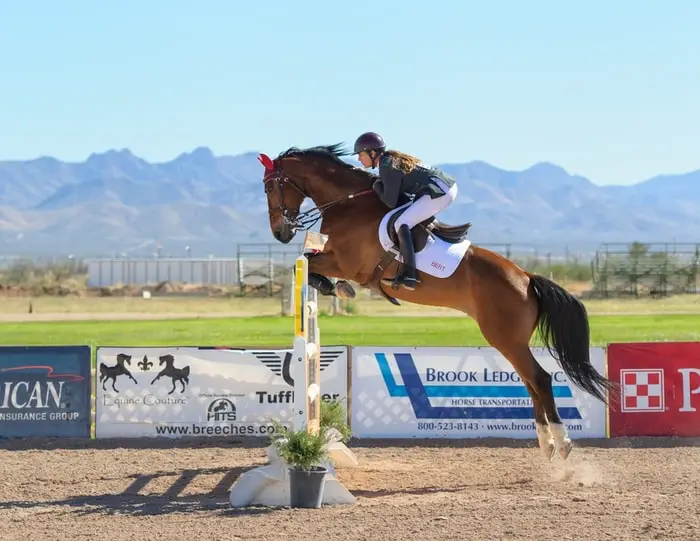
Types of Horse Show Jumping
There are two types of show jumping conducted in FEI and Olympic games.
1. The Novice Show
After some months of horse jumping training, the horses should be ready for their first novice show, preferably not too far away. It will help with both horse and rider education and give some idea of progression.
Early arrival at the horse show is a must to get used to the area and atmosphere. After the journey, the horse will need to be walked around to release the tension caused by traveling. Then the horse rider should try to leave in good hands while he or she walks the jumping course. Any slope in the ground should be noted, and any doubles and combinations that will probably need to be ridden at a bit more strongly as a novice horse will probably take a good look at him.
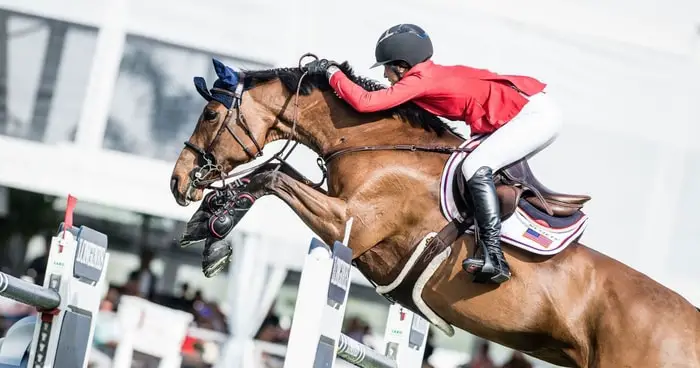
The rider can return to his box after watching and dressing for the competitions. Apart from his kit and everyday riding, grooming kit, watering, and feeding equipment, it is wise to take spare reins, stirrup leathers, and an extra girth.
In good times, the horse and rider should be in the collecting ring and jump the practice fence gently six or seven times. Throughout the test, the horse rider should remain as calm as possible so that the horse does not think the occasion is too exciting or out of the ordinary, no matter how the test goes.
The subsequent show jumping training depends on the proficiency shown by horses and riders and the individual horse; some horses need much less work than others to reach their peak.
2. Show Jumping Show
There is a significant number of variables and competitions at different levels. Obstacles to negotiate includes:
- Spread fences.
- High Fences.
- Combination fences.
- Water Jumps.
- Deby Banks.
Recognized course designers build courses for major competitions. Organizers can devise their competitions so long they can comply with FEI rules. The obstacle and all their parts are constructed so that although they can be knocked down, they are so light that they fall at the slightest touch. The poles are supported in cups not exceeding half the diameter of the poles, and shallow and flat cups are used to support planks and the gates. Major events of Show Jumping of Horses are:
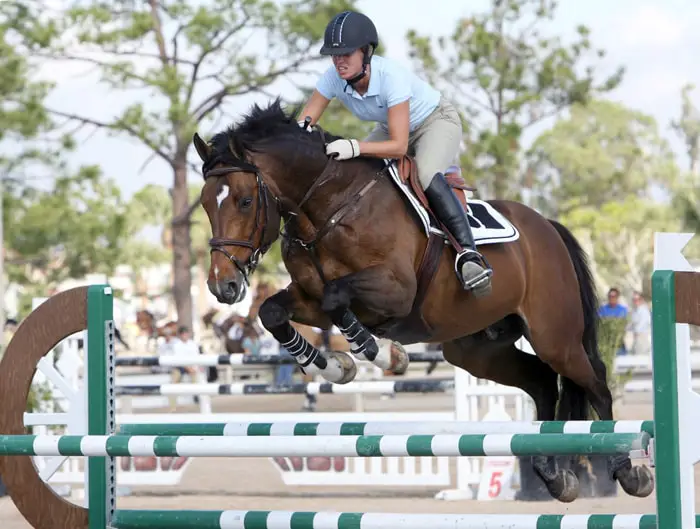
- Nations’ Cup (with the team-best record of the season winning the President’s Cup).
- The World Championship.
- The Olympic games, all with individual and team entries are allowed except for the Nations’ Cup, a team only.
3. Show Jumping in Olympic Games
Horse show jumping in the Olympic games is a two-round competition. The best eight teams and 20 individuals go forward to the second round on a different course where their marks are added to those of their first round.
The obstacle limits are 1.30 to 1.60 m (4-5 feet) high for straight fences, 1.50-2.20 m (5 to 7 feet) for spreads, and the water jump must be at least 4.5m (14 ft 8 inches) wide, with a total of 12-15 obstacles. In the second-round straight fences a43 1.40-1.70m (4.5 to 5.5 feet) high, spreads are not more than 2m (6.5 feet) wide, and the water jumps as far as the first round.
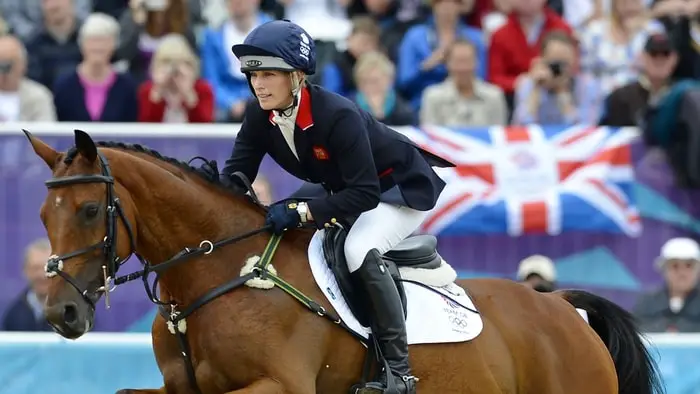
4. Horse Show: The Nations’ Cup
The Nations’ cup is an international team one-day competition with two rounds on the same course. The teams consist of four-horse riders with three or four equine riders, with the three best scores.
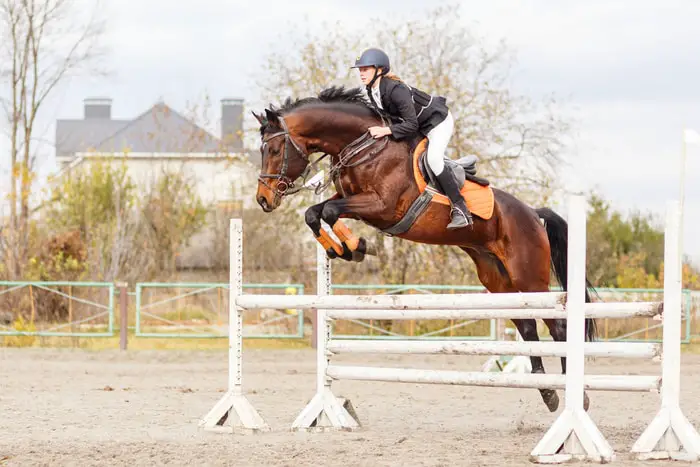
5. The World Show Jumping Championship
The World Championship of Horse show jumping has three preliminary competitions and a final. The teams can consist of three or four riders, with the three best scores counting in the first two rounds. The four individual riders with the best scores go into the final in which the competitor rides each of the four horses in turn.
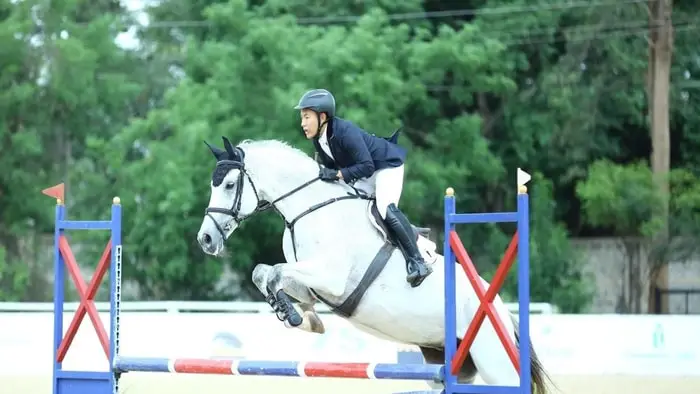
6. The Puissance Competitions
The Puissance (French for Power) competitions are horses’ high jumps with 6 to 8 straight fences at least 1.40 m (4.5 feet) high. Suppose there is a first-place tie, if necessary, going progressively higher to a total of four jumps-off. Competitions have a president and at least one other judge.
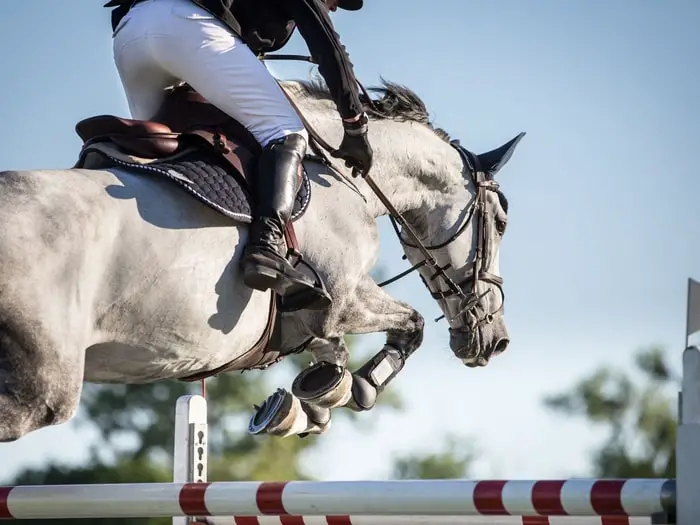
7. Indoor Show Jumping Arena
An indoor arena for a major event has a minimum arena of 2500 square meters (2990 square yards) and is completely enclosed. Red and white flags mark starting and finishing lines, obstacles, and turning points. Horse riders keep red flags to the right and white to the left. Each obstacle is numbered in the order in which it should be jumped. Before the competition, a detailed plan shows the positions and types of obstacles, starting, turning, and finishing lines and the track to be followed, and giving time limits and penalties. Before the event starts, the horse riders can walk the course. The starting order is always by a draw.
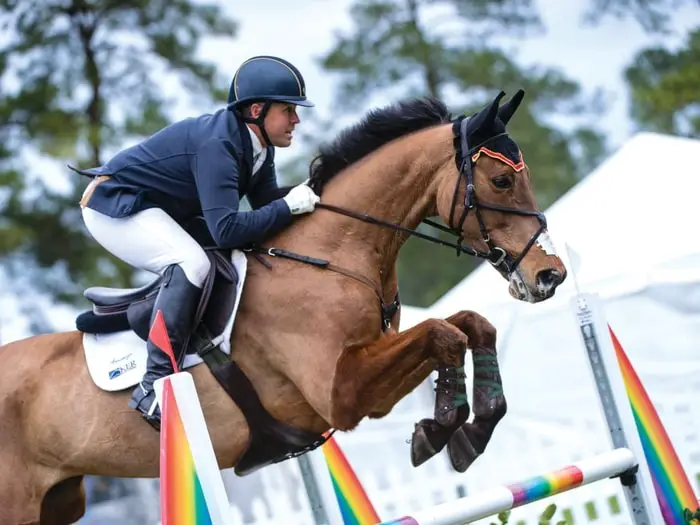
Rules of Horse Show
Riders can wear riding club or hunting uniform with white, fawn, or pale-yellow breeches, a hunting cap or top hat (or bower for women), and black boots (at smaller shows hacking jackets are often worn with a choice of shirt or tie and either brown, fawn, or pale yellow breeches). Those in services can wear their uniform.
Wipes must not exceed 75 cm (30 inches) in length or be weighted at the end. Blinkers and hoods are not allowed. Only a free-running martingale may be used.
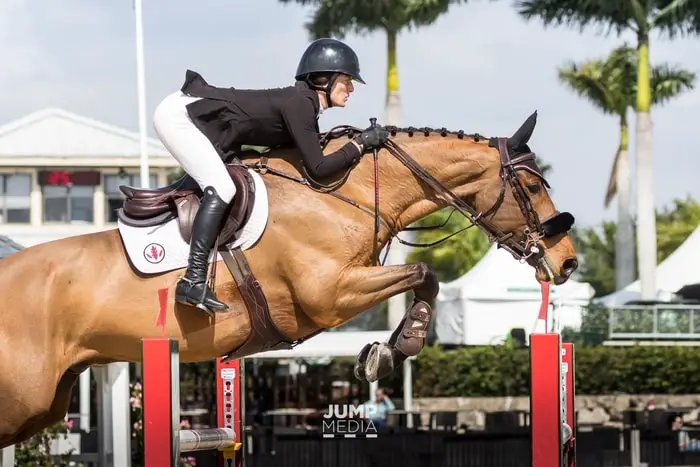
A standing martingale of horse tack may only be attached to the cavesson part of a noseband fitted above the bit. A gag snuffle may be used; a Market Harborough rein may be used, but only with a snuffle. All other running or check reins and reins acting through sheaves or pulleys are prohibited in the arena.
The time allowed for show jumping varies with the course and starts when a horse rider crosses the starting line, finishing when the rider crosses the finishing line. The clock is stopped for rebuilding knocked down obstacles but not for falls or course deviations. The time allowed is twice the time given to finish the showjumping.
In most scoring systems, penalties are expressed in terms of points for faults: 3 for first disobedience, 4 for knocking down an obstacle or putting a foot in the water, 8 points for a fall, 6 for second disobedience, elimination for a third, and a quarter fault for each second over the time allowed.
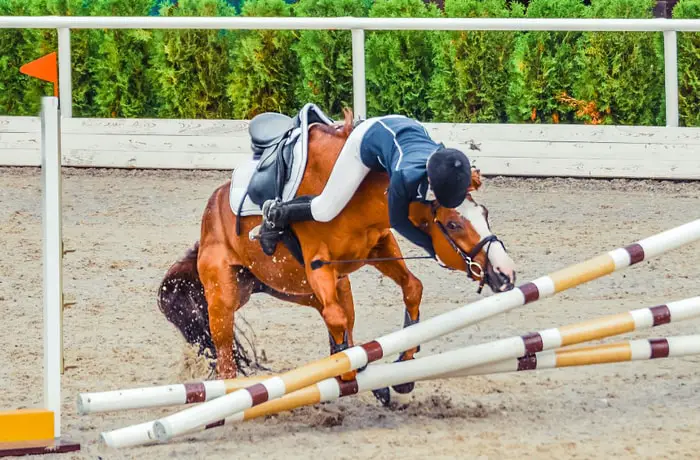
The second is added to the total time taken according to the fault in the time penalty system. There is a tie for the first place, and there may be a jump-ff that may not be changed, though some may be left out. The height and or spread of obstacles may be increased if those taking part in the jump-off went clear in the previous round. There is usually a limit of two jump-off.
Concluding Remarks on Horse Show Jumping
The horse show is one of the most popular events in Olympic and other equestrian sports competitions. Horse show jumping is becoming popular day by day. In my article, I have briefly discussed the different types, training of horses, rules, and show jumping history. This article will enhance your knowledge about popular equestrian sports.